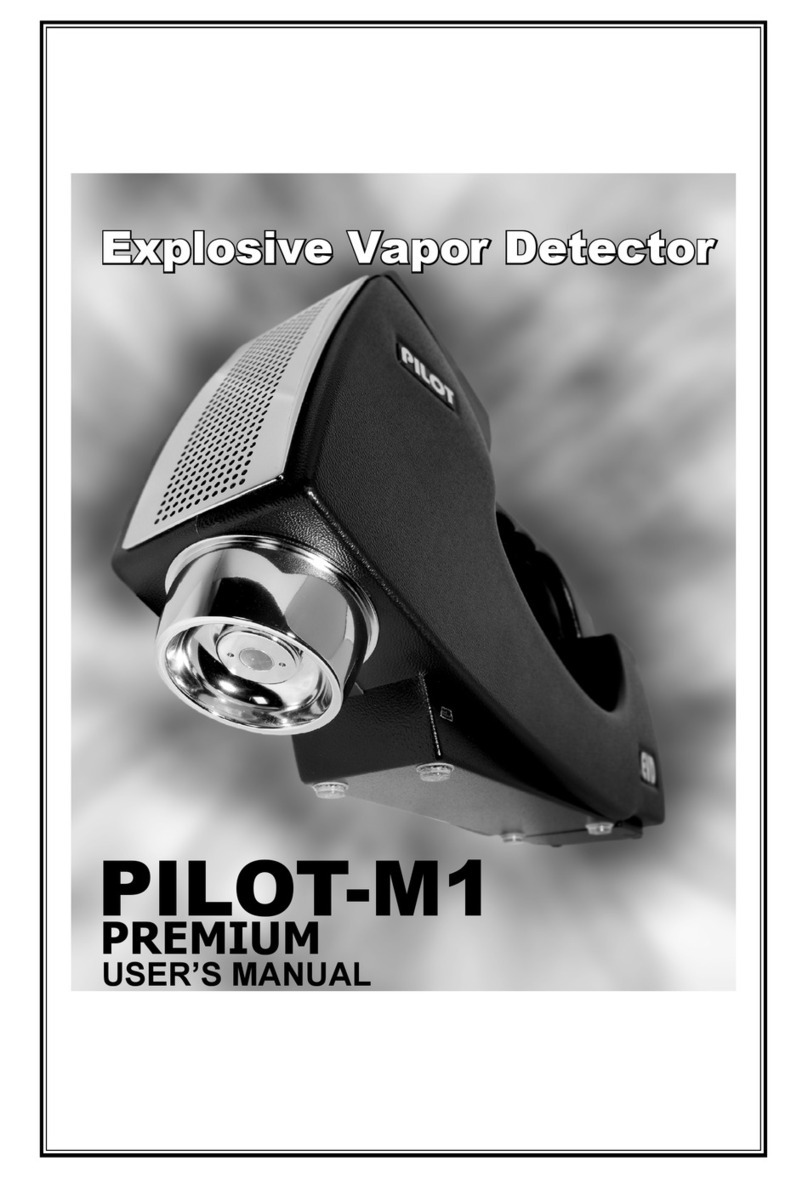
3
EXPLOSIVE VAPOR DETECTOR
USER’S MANUAL
3. RECOMMENDATIONS
The portable Explosive Vapor Detector (EVD) «PILOT®-M1» is intended for detection of
charges of explosives in non-tight volumes and traces of explosives on a surface of surveyed
objects. Detection is carried out by sampling air from internal volumes of surveyed objects
or from their surfaces and the analysis of tests on contents of characteristic components of
explosive vapor.
The detector is capable to detect traces of explosives based on nitroglycerine (NG), EGDN,
trinitrotoluene (tol, trotyl, TNT), PENT (tetranitrapentaerythrit, pentaerythrittetranitrate,
Pentrit, PENT), hexogen (RDX), oktogen (HMX), tetryl (Tetril) and nitrocellulose powders,
engaging mixing explosives on their ground: Semtex and other plastic and elastic explosives
on the basis of RDX, PENT or their mixture, B-type compositions (ТГ-20, ТГ-40, ТГ-60, ТГ-
80, МС, ТГАФ)*, C-type (C1, C2, C3, C4, ПВВ-4*, ПВВ-5А*, ПВВ-7*, ПВВ-12М*, ЭВВ-11*,
ЭВВ-32*, and etc.), H-6, HBX, Minol-2, Amatol (amatol, аммонит № 6-ЖВ*), Primacord,
Primasheet, Tetritol, Tritonal, Cordit N, A-IX-1, A-IX-2, A-IX-20, octols*, ocfols* and etc.
* - explosives of Russian origin.
4. OPERATIONAL PRINCIPLE
The proper sample collection is governing condition for any trace detector. The versatile
EVD is capable of analyzing either trace particle or vapor samples, allowing the operator to
apply an adequate sampling technique for the substance suspected.
For example, most explosives do not have a strong vapor presence and in the real world are
very dicult to detect by vapor. Therefore, the most reliable collection and analysis method
for those substances is particle collection.
The EVD operational principle is based on Drift Spectrometry method - free ions mobility in
an alternating electric eld. Explosives vapor detection is realized by assay collection from
the suspect object surface or its inner space and subsequent analysis of these samples for
the presence of typical components. Sample collection is accomplished by means of air
suction from object’s surface or through the holes, chinks and slots in its body. It can be done
directly or by means of additional pump. Assay for analysis can be obtained by wiping the
inspected surface with sampling swabs as well.
Explosives particles collected by swab or its adsorbed vapor are ionized and directed
into a drift-box with alternating electric eld. Then distinctive ions typical to explosives are
separated and registered.
The obtained analysis data is processed by build-in CPU and displayed on LCD.




























